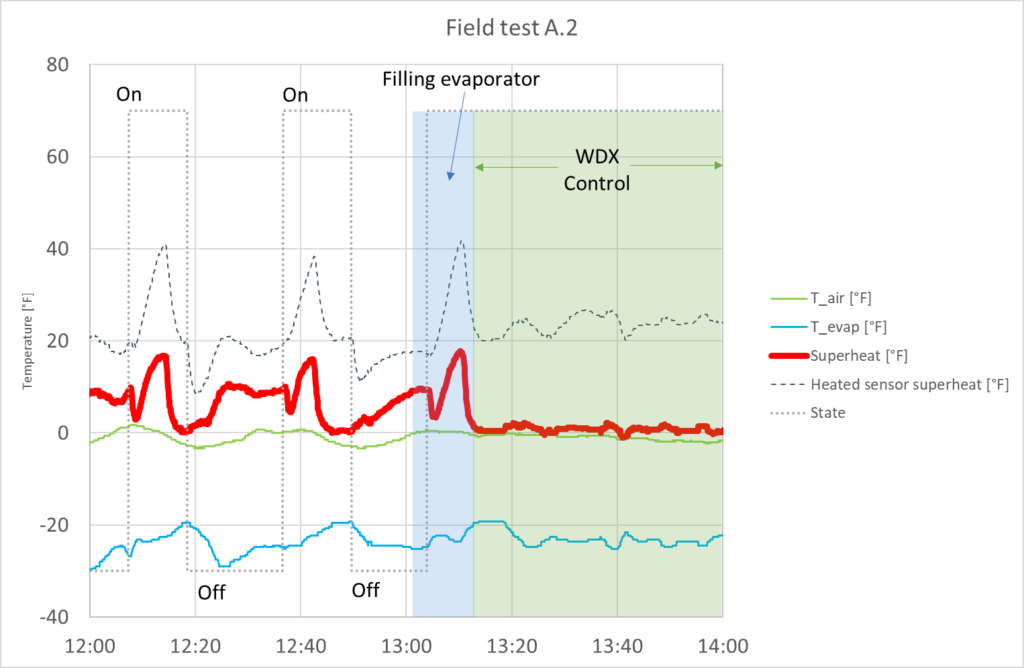A Breakthrough for Low-Charge Ammonia Systems and Energy Efficiency
In a world where energy efficiency and sustainability are no longer optional, industrial refrigeration companies are now leveraging advanced technologies and innovative practices to not only meet regulatory demands, but also to redefine what it means to achieve operational success.
As businesses face increasing pressure to reduce their environmental impact and operating costs, low-charge ammonia systems have emerged as a key area for improvement. The NeoCharge Solution, unveiled by Danfoss earlier this year, offers a transformative approach to achieving these goals, by delivering both significant energy savings and reductions in ammonia charge for refrigeration systems.
Reducing Ammonia Charge and Improving System Efficiency
Traditional systems, particularly those using Direct Expansion (DX) technology, often require lower refrigerant volumes but suffer from inefficiencies due to superheat management. Every 1.8°F of superheat can drive energy consumption up by about 1%, making system optimization a pressing concern.
In addition, recirculating systems are frequently plagued by increasing overfeed rates, which not only boost energy use but also result in larger refrigerant charges and higher operational costs. This increase in overfeed over time impacts overall system performance and further complicates system management.
The NeoCharge Solution addresses these inefficiencies head-on by enabling DX systems to operate with zero or ultra-low superheat. By eliminating the need for high superheat, NeoCharge allows the evaporating temperature to be much closer to room temperature, which can result in energy savings of up to 20%. In field tests, such as in Figure 1, NeoCharge has shown consistent reductions in superheat from peaks of 20°F to 0°F, leading to higher evaporating temperatures and reduced power consumption.

Recirculating systems also benefit from the NeoCharge solution. By maintaining a stable and low recirculating ratio as close as 1.2:1, NeoCharge significantly reduces ammonia charge by 30-40%. For many facilities, this means not only a lower ammonia volume but also a decrease in the energy required to operate the system, offering customers immediate and long-term cost savings.
Flexible Application for New and Existing Systems
One of the most attractive aspects of the NeoCharge Solution is its versatility. Whether you are installing a new system or looking to upgrade an existing facility, NeoCharge can be easily integrated into both DX and recirculating systems. This flexibility allows businesses to take advantage of energy savings and ammonia charge reductions with minimal disruption to operations, regardless the system type.
For existing systems, retrofitting with NeoCharge offers the opportunity to optimize performance and reduce costs without the need for a complete system overhaul. For new installations, the potential to design systems with a lower ammonia charge from the start provides a compelling case for businesses looking to improve sustainability and efficiency.
Savings and Sustainability for the Future
The NeoCharge Solution isn’t just about improving refrigeration efficiency—it’s about helping businesses achieve their sustainability goals while reducing operating expenses. Lowering ammonia charges reduce the environmental impact of systems, helping to meet increasingly stringent regulatory requirements.
Simultaneously, the reduction in energy consumption translates directly into cost savings, making NeoCharge a valuable investment for the long haul.
In an era where energy efficiency and environmental responsibility are paramount, Danfoss’ NeoCharge Solution offers industrial refrigeration companies a practical, scalable solution to meet these challenges. By focusing on both immediate cost savings and long-term sustainability, NeoCharge provides businesses with the tools they need to succeed in a competitive and evolving industry.
